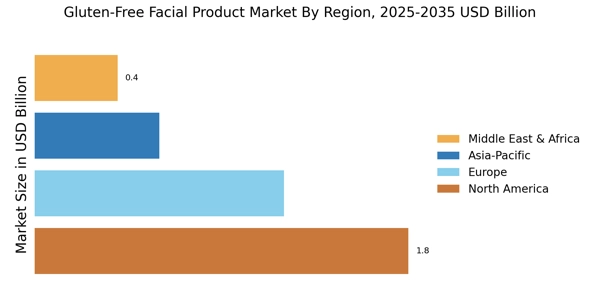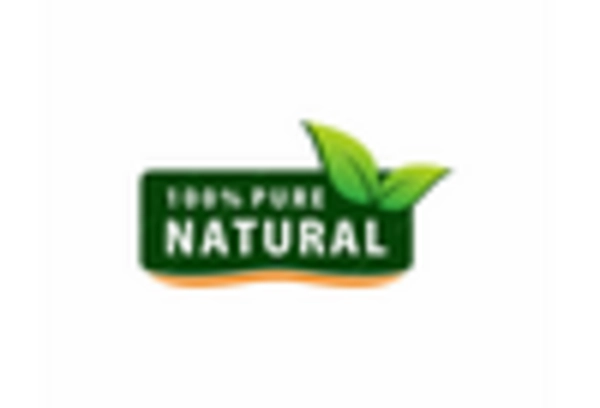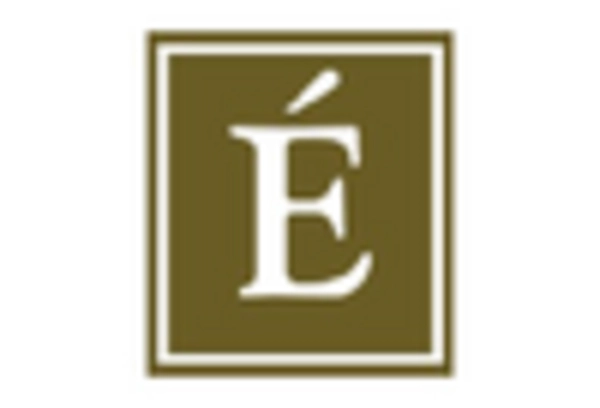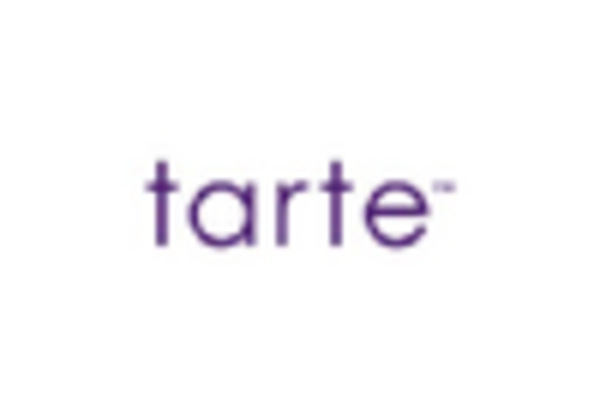Growing Demand for Natural Ingredients
The Gluten-Free Facial Product Market is witnessing a notable shift towards natural and organic ingredients. Consumers increasingly prefer products that are free from synthetic additives and harsh chemicals. This trend is driven by a heightened awareness of the potential adverse effects of certain ingredients on skin health. According to recent data, the market for natural skincare products is projected to grow at a compound annual growth rate of approximately 10% over the next five years. This growth is indicative of a broader movement towards clean beauty, where consumers are actively seeking gluten-free options that align with their health-conscious lifestyles. As a result, brands that prioritize natural formulations are likely to gain a competitive edge in the Gluten-Free Facial Product Market.
Increased Focus on Health and Wellness
The Gluten-Free Facial Product Market is experiencing a surge in interest due to a broader societal focus on health and wellness. Consumers are increasingly prioritizing their overall well-being, which extends to their skincare choices. This trend is reflected in the growing popularity of gluten-free products, as individuals seek to avoid potential allergens and irritants. Market Research Future indicates that the health and wellness industry is projected to reach a value of over 4 trillion dollars, with skincare being a significant segment. As consumers become more discerning about the products they use, brands that emphasize health-conscious formulations are likely to thrive in the Gluten-Free Facial Product Market. This focus on wellness is expected to drive innovation and product development in the coming years.
Rise in Skin Sensitivity and Allergies
An increase in skin sensitivity and allergies among consumers is significantly influencing the Gluten-Free Facial Product Market. Many individuals are becoming more aware of their skin's reactions to various ingredients, leading to a demand for hypoallergenic and gluten-free products. Reports indicate that skin allergies have risen, prompting consumers to seek out products that minimize the risk of irritation. This trend is particularly pronounced among individuals with celiac disease or gluten intolerance, who are more likely to experience adverse reactions to gluten-containing products. Consequently, brands that offer gluten-free facial products are positioned to cater to this growing demographic, thereby enhancing their market presence within the Gluten-Free Facial Product Market.
Regulatory Support for Gluten-Free Products
Regulatory frameworks supporting gluten-free labeling and product standards are playing a crucial role in the Gluten-Free Facial Product Market. Governments and health organizations are increasingly recognizing the importance of clear labeling for gluten-free products, which helps consumers make informed choices. This regulatory support not only enhances consumer confidence but also encourages brands to develop and market gluten-free facial products. As a result, the market is likely to see an influx of new entrants and innovative products that meet these standards. Furthermore, the establishment of guidelines for gluten-free claims can lead to a more competitive landscape, benefiting consumers with a wider array of options in the Gluten-Free Facial Product Market.
Influence of Social Media and Beauty Influencers
The role of social media and beauty influencers is increasingly shaping consumer preferences in the Gluten-Free Facial Product Market. Platforms such as Instagram and TikTok have become vital channels for product discovery and brand engagement. Influencers often promote gluten-free beauty products, highlighting their benefits and efficacy, which resonates with their followers. This trend has led to a surge in consumer interest and sales for brands that effectively leverage social media marketing strategies. Data suggests that influencer marketing can yield a return on investment of up to 11 times, making it a powerful tool for brands in the Gluten-Free Facial Product Market. As consumers turn to trusted figures for recommendations, the influence of social media is likely to continue driving growth in this sector.


















Leave a Comment